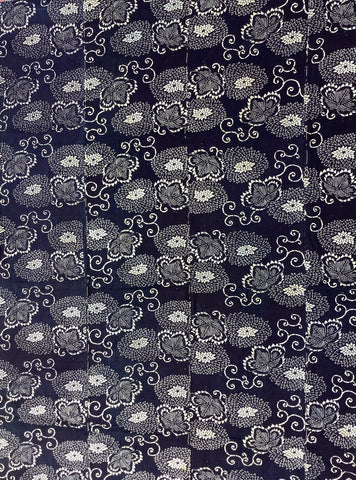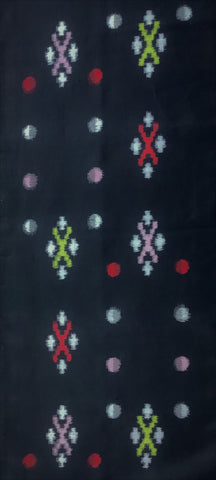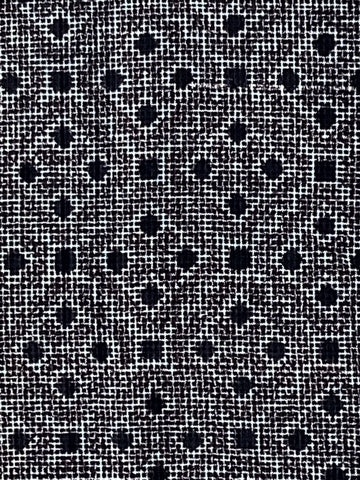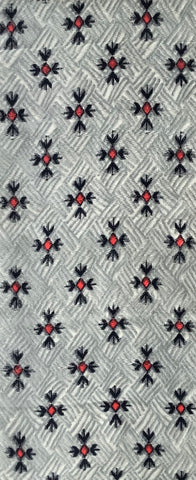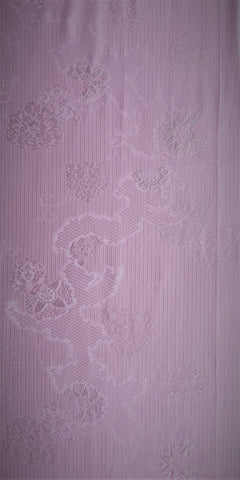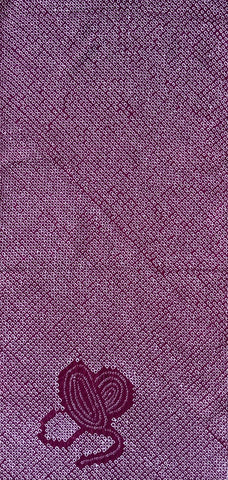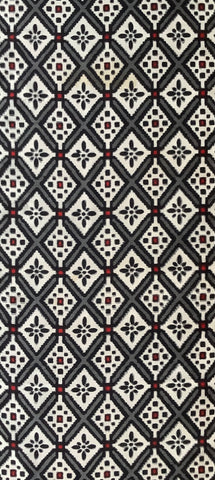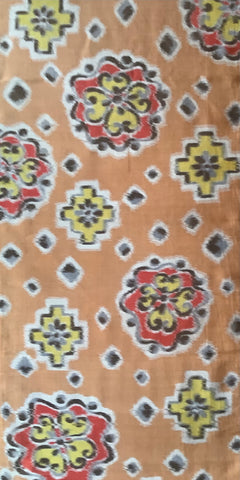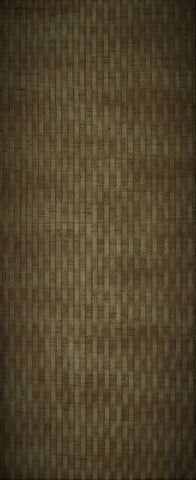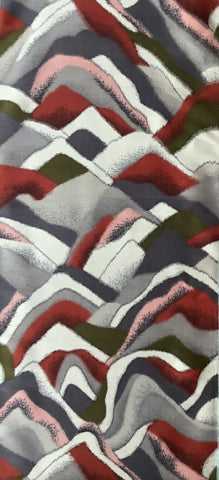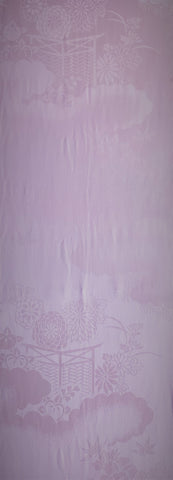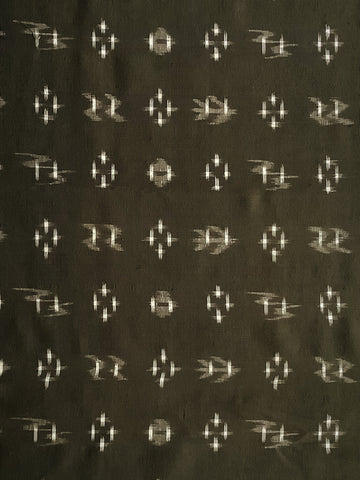7782: 1950s Japanese Meisen Silk 59in.Pc.(AraiHari) Cursive Floral Medallions Grid

Catalog# 7781
1930s to 1950s Japanese Textiles:
From Arai-Hari Cleaners
Japanese Kimono Meisen Silk Fabric Piece
Distinctive Floral & Cursive Medallions in Diagonal Grid Array
Width:14 inches / 35.56 cm
Length: 59 inches / 149.86 cm
US$16.00 per piece
Plus Shipping

Item Details and Description
- Fabric History/Pedigree: 1930s to 1950s silk fabric pieces received from traditional Japanese kimono cleaner/reconstructor called Arai-Hari -- see an excellent explanation of traditional Arai Hari by textile expert John Marshall, by click-pushing HERE.
- Fabric Description: Thin summer lightweight Meisen silk, slightly translucent, lightly stiff, minimal sheen; the background is a soft white but with light gray reticular patterns of Asa no Ha ((Hemp Leaves Patterns) serving as background (very light and subdued, scarcely noticeable except up very close as most of the fabric is filled with the medallions grid; We interpret these medallion shapes as 2 types: one in cursive lines, the other floral elements, measuring 3.5 inches/8.89cm X 2.5inches/6.4cm wide; these medallions are in a symmetrical diagonally-oriented grid; This pattern is on both sides and like others we have here, at first glance one might not realize the pattern is Japanese; please see commentary in next item below; design colors: predominantly rusty-red, black, and pale red(within medallions themselves, please see closeups.
-
COMMENTARY: This highly modernistic, Western-influence sort of kimono fabric design was big after World War II (after 1945), as Japanese artists and designers felt liberated from the oppression in Japan during the war, and they experimented with many creative looks, like this one, keeping Japanese look but influenced by Western art -Impressionism, Abstracts - This is just our opinion, Yoko).
As typical of meisen silks, the figures and line edges are intentionally fuzzy; this is a somewhat unusual meisen design, distinctive; This piece same on both sides.
- Colors: Please NOTE that colors and contrast differ on each device so please use our text descriptions to complement your sense of the fabric.
- Condition: Excellent
Background Information on Meisen Kimonos:
"...Young women have rediscovered(Japan Times) the kimono, and you can see them out in Harajuku on the Sunday fashion parade. There's even a term for these girls -- not surprisingly they are called "kimono girls." There are even some nice books documenting the trend which you can check out at J-List and are definitely worth having if you are at all into fashion.
"The meisen kimono in particular has become very popular. These kimono were made in the first half of the twentieth century, and were characterized by a glossy sheen, and brilliant patterns. There is often a sort of blurry quality to the silks...."
[*original article has been pulled]
5862: 1940s Japanese Meisen Silk Kimono Fabric, 56in.(Arai Hari)
Regular price $ 12.00 Sale price $ 6.00
6603: 1930s-50s Japanese Meisen Mock-Kasuri Silk 58 in.Piece(AraiHari)
Regular price $ 20.00 Sale price $ 10.00
6637: 1960s Japanese Cotton Yukata Fabric, 45in. Piece(Arai-Hari)
Regular price $ 15.00 Sale price $ 7.50
6671: 1930s-50s Japanese Meisen Silk 42 in. Piece(AraiHari)
Regular price $ 15.00 Sale price $ 7.50
6776: 1930s-50s Japanese Meisen Silk 42 in. Piece (AraiHari)
Regular price $ 10.00 Sale price $ 5.00
6793: 1930s-50s Deadstock Japanese Meisen Silk Fabric, Abstract,Yard
Regular price $ 20.00 Sale price $ 10.00




